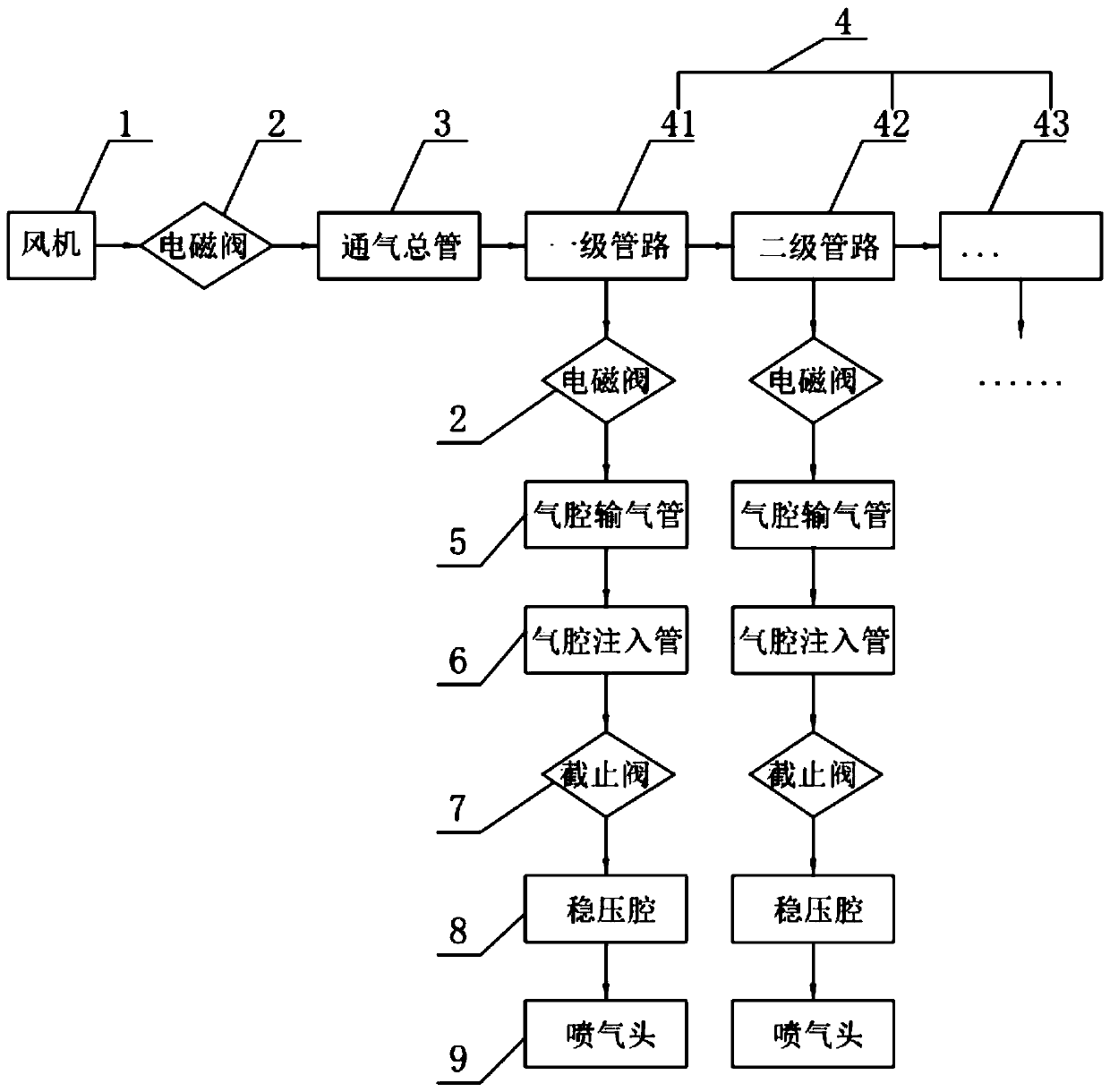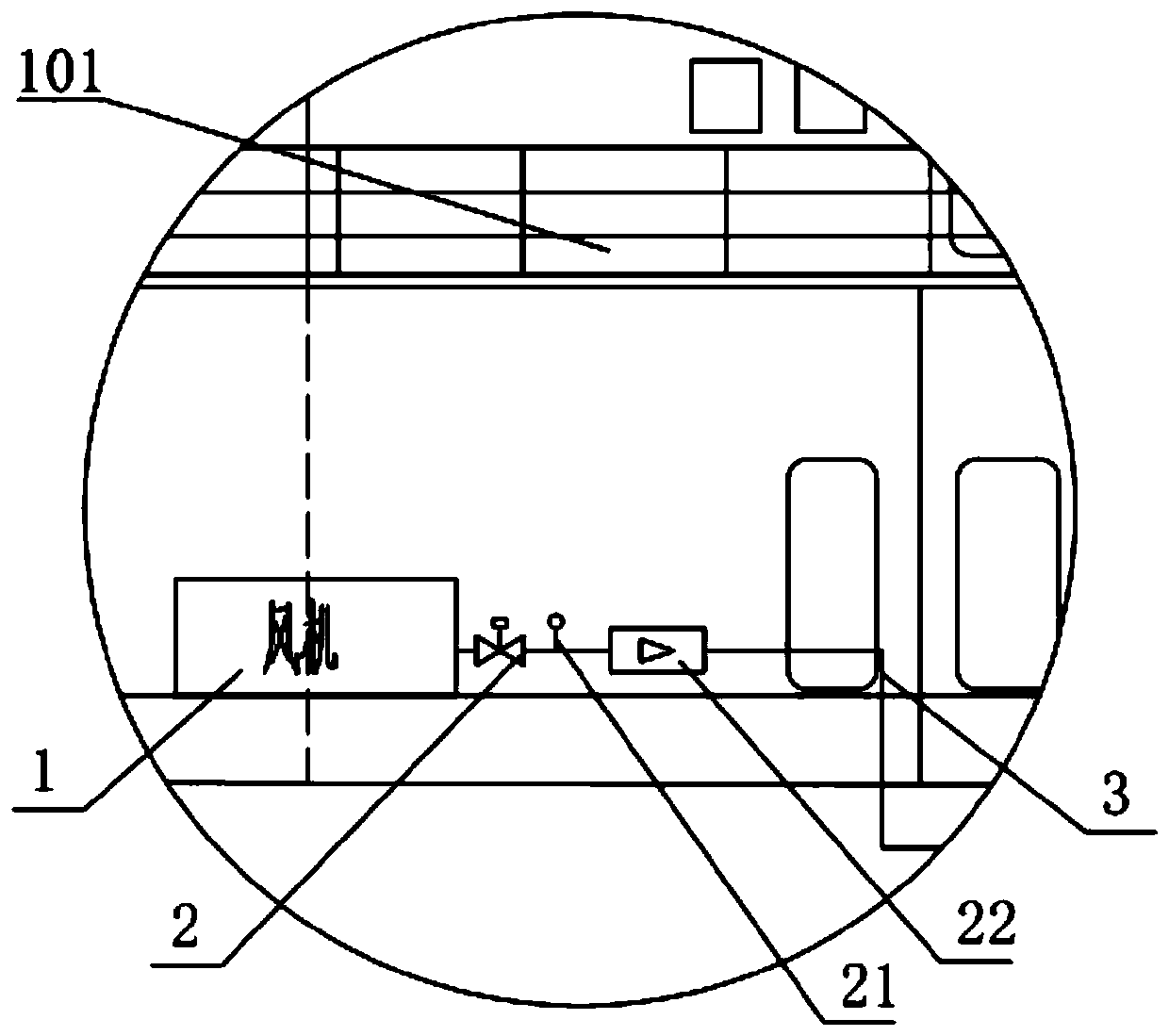Marine air layer resistance-reducing and energy-saving device
An energy-saving device and gas layer technology, applied in the direction of ship hull, hull design, ship construction, etc., can solve the problems of restricting, restricting the use of technology, not achieving good energy-saving effect, etc., achieving convenient operation, reducing wetted area, structure compact effect
- Summary
- Abstract
- Description
- Claims
- Application Information
AI Technical Summary
Problems solved by technology
Method used
Image
Examples
Embodiment 1
[0049] In the first embodiment, the wedge block 12, the slope structure one 13 and the pressure stabilizing chamber 8 can all be modified and added to the existing hull 10, so as to obtain an air layer drag reduction and energy saving device.
Embodiment 2
[0051] like Figure 7 As shown, the bottom of the hull 10 near the stern is set as a slope structure 2 121, and the slope structure 2 121 is inclined downward toward the direction of the stern; as Figure 8 As shown, a step 131 is provided on the bottom of the hull 10 near the bow, and the bottom of the front part of the step 131 protrudes downward.
[0052] The bottom surface of the hull 10 is composed of inclined plane structure 121, steps 131 and coaming plate 11, partition 111 to form air pockets, thereby locking air bubbles and forming an air layer; When the ship is sailing, the air bubbles are smoothly discharged toward the stern; the step 131 at the bow is used to prevent the gas from escaping from the ship, which is more conducive to the maintenance of the air layer.
[0053] like Figure 10 and Figure 11 As shown, the plenum chamber 8 is welded on the outer bottom surface of the hull 10, the air nozzle 9 is set at the bottom of the plenum chamber 8, and the bottom...
PUM
 Login to View More
Login to View More Abstract
Description
Claims
Application Information
 Login to View More
Login to View More - R&D
- Intellectual Property
- Life Sciences
- Materials
- Tech Scout
- Unparalleled Data Quality
- Higher Quality Content
- 60% Fewer Hallucinations
Browse by: Latest US Patents, China's latest patents, Technical Efficacy Thesaurus, Application Domain, Technology Topic, Popular Technical Reports.
© 2025 PatSnap. All rights reserved.Legal|Privacy policy|Modern Slavery Act Transparency Statement|Sitemap|About US| Contact US: help@patsnap.com



